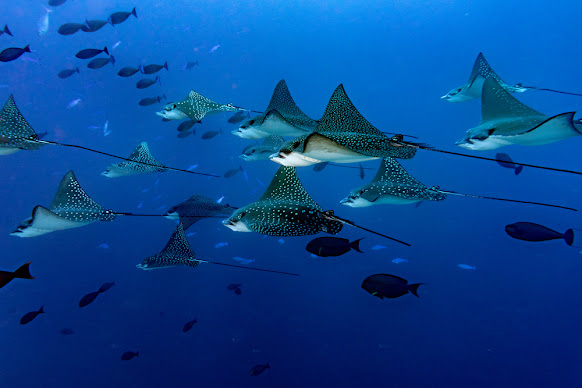Search This Blog
"Catch Fishing" is an immersive angling experience that transports players to picturesque fishing spots around the world. With realistic physics, diverse fish species, and a rich progression system, it offers an authentic and rewarding fishing adventure for players of all levels. Join a vibrant community of anglers, compete in tournaments, and experience the thrill of the catch in "Catch Fishing."
Featured
- Get link
- X
- Other Apps
How to catch Eagle ray fish
Fishing for eagle rays can be an exciting and challenging experience. Here are some tips to help you be successful fishing for this species:
Necessary equipment
- Rod and Reel: Use a medium to heavy action rod and a good quality reel with 30 to 50 pound line.
- Line: Use strong fishing line, such as monofilament or multifilament.
- Hook: A large, sturdy hook is required, usually between 5/0 and 10/0.
- Bait: Eagle rays generally prefer natural baits such as small fish, squid or pieces of fish.
Location
- Shallow Waters: Eagle rays are often found in shallow coastal waters, especially in sandy or muddy areas.
- Estuaries and Bays: They are also common in estuaries and bays, where there is an abundance of food.
Fishing Techniques
- Bottom Fishing: Eagle rays are bottom fish, so the bottom fishing technique is effective. Use a weight to keep the bait close to the bottom.
- Chumming: Spreading pieces of fish in the water (chumming) can attract stingrays to your fishing area.
- Patience: Fishing for eagle rays can require patience, as they can take a while to take the bait.
Procedure when Capturing
- Sting: When the stingray bites, give it a firm sting to ensure the hook is securely attached.
- Fight: Get ready for a strong fight. Eagle rays are known for their strength and endurance, being able to run long runs.
- Safety: When bringing the stingray onto the boat or shore, be careful. They have poisonous stingers on their tails that can cause painful injuries.
Release or Slaughter
- Release: If you plan to release the ray, do so carefully so as not to harm the fish. Use pliers to remove the hook and avoid touching the tail.
- Slaughter: If you intend to keep the stingray, be aware of local regulations regarding minimum and maximum sizes allowed and follow humane slaughter practices.
Additional Tips
- Weather Conditions: Eagle rays are more active in certain weather conditions. Fishing at high tides and during the morning or late afternoon can increase your chances.
- Partnership: Fishing in pairs or with a group can be safer, especially when handling large stingrays.
By following these tips, you will be well prepared for fishing for eagle rays, whether for sport or food. Always remember to respect local regulations and sustainable fishing practices.
Read More Stories......
- Get link
- X
- Other Apps



Comments
Post a Comment